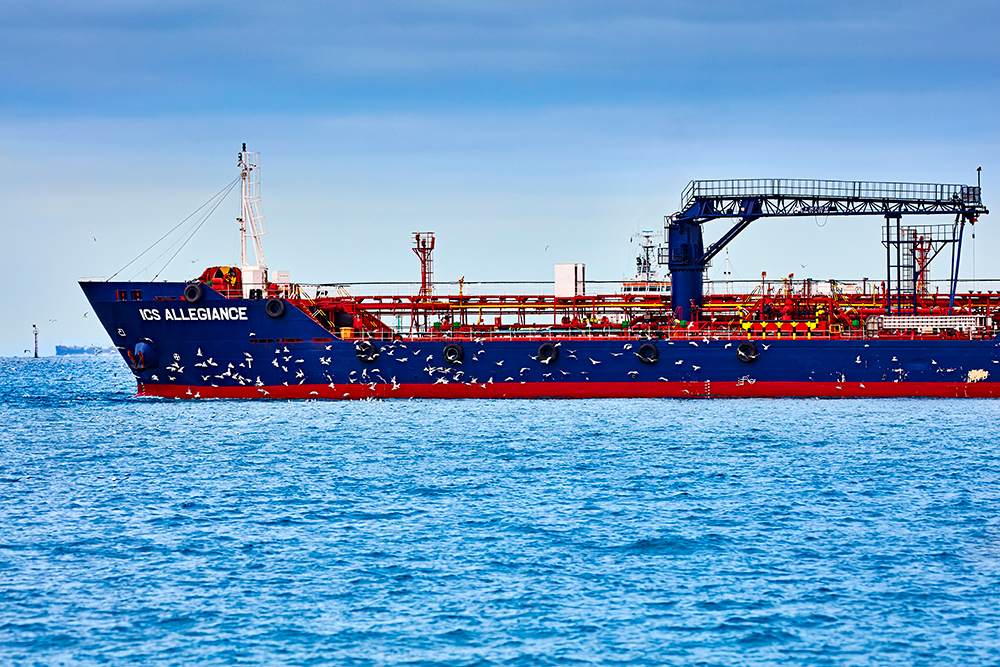From tankers delivering crude oil and refined products, to the barges that refuel ships going to and from Australia, vessels are a vital part of Viva Energy’s operations. Now, thanks to more accurate weather forecasting, our marine operations are safer and more reliable than ever.

Adverse weather conditions can have a profound impact on marine operations. At best it can cause costly delays, as ships have to wait for strong winds to subside before refueling from a barge (called bunkering), unloading cargo or berthing side-by-side at a dock. At worst, the safety of ships and their crews in such circumstances can be compromised.
Advance knowledge of weather conditions – in particular wind speed – helps keep our vessels safe and on schedule. Of course, predicting the weather accurately can be a challenge!
A better solution
For the last couple of years, Viva Energy has relied on a unique weather forecasting service provided by MetraWeather, to monitor weather conditions at every port where we manage a fuel terminal with ships coming in to berth.
Angelo Portelli, who represents MetraWeather, explains how it works: “Unlike publicly available forecasts, our service provides greater accuracy because the type of modeling it uses is location specific. For instance, the conditions at Gore Bay can often be very different to the rest of Sydney Harbour due to the surrounding topography. We’ve collected statistical data from Gore Bay and have come up with an accurate way of modeling the bay’s particular idiosyncrasies.”
It’s a real innovation that’s led to many direct benefits for Viva Energy and our customers.
Predicting wind
Monique Lewis is a Scheduler in Viva Energy’s Marine team, and relies on the service to schedule the bunkering of ships by the refueling barge in Melbourne.
“We receive notification from MetraWeather twice a day, advising us of wind speeds for the next three days,” she explains. “We use that information to arrange safe scheduling. Smaller vessels are most affected by high winds, so if strong winds are forecast we’ll schedule larger vessels during those periods. Of course if the forecast tells us the wind will exceed a safe level, we don’t take the risk. This is particularly important at night, when visibility is poor and there’s a greater possibility of an incident due to excessive winds.”
Keeping customers informed
It also helps Monique explain to customers why their bunkering might have to be rearranged. “Customers don’t enjoy sitting around waiting to be bunkered, because of course their time is valuable. But by presenting the information to them we can explain clearly what the problem is, which gives them comfort and trust that we’ve made informed decisions based on real evidence.
“It also allows our customers to plan ahead, because we have information for the next three days. We explain all the options to them, so they can talk to the terminal operator or the owners of the charter, and make an informed judgment about when to refuel.”
Before MetraWeather, things were a little less certain. Often decisions about safety were up to the master of the barge. He or she would make a judgment call on when to bring the ship in, which could be spot on or potentially too conservative, meaning vessels missed bunkering slots needlessly. MetraWeather also helps Monique standardise the decision making process for whoever is master of the barge at any given time, which is important because masters work in shifts.
Time and tides
The new technology also helps Dave Walker, who works out of our Geelong Refinery as a Crude and Feedstock Integrator.
As well as wind speed, Dave looks at the depth of the water (called tidal suppression or tidal surge) because he’s often scheduling large ships.
“The majority of the vessels we bring in are tidal, meaning that they’ve got to berth on a high tide. Typically there are two tides in a day, so if a ship doesn’t get in on a particular tide then you’ve got to wait twelve or twenty-four hours for the next opportunity. The data from MetraWeather gives us that outlook saying, well, if we miss this tidal window, what’s the chance of meeting the next one? The wind also plays a role in that decision.
“If the forecast looks like it won’t work, we might have the option of bringing the ship in earlier. It helps us make better use of the available berthing facilities. But if the delay is unavoidable it also lets us communicate with the refinery, which is important because it gives them the chance to manage potential operational impacts from a delay in receiving a key feedstock.”
In the search for better solutions that will improve both our safety and efficiency, Viva Energy will continue to invest in new ideas and innovative technology. The weather forecasting system provided by MetraWeather is an extremely innovative technology that not only makes our marine operations safer – it also helps them run more smoothly for our customers.
Find out how Viva Energy supports the Marine industry.